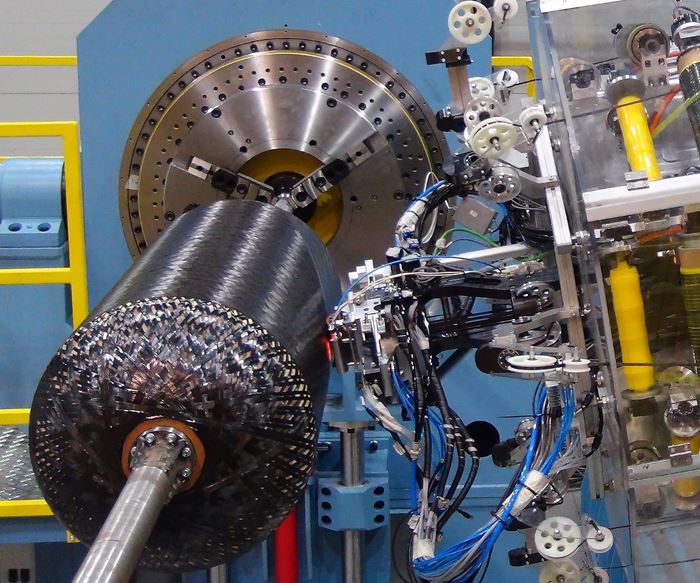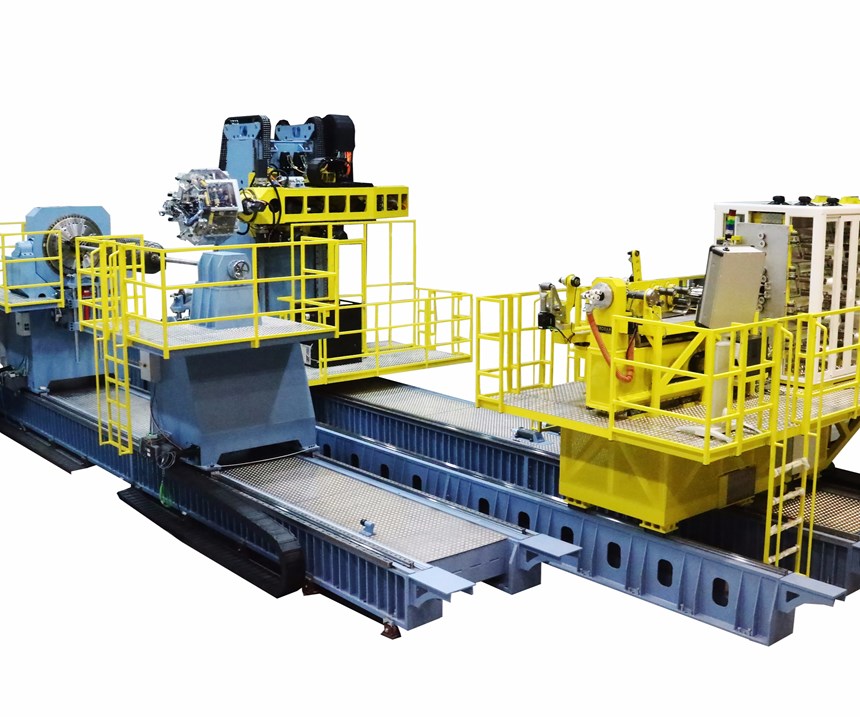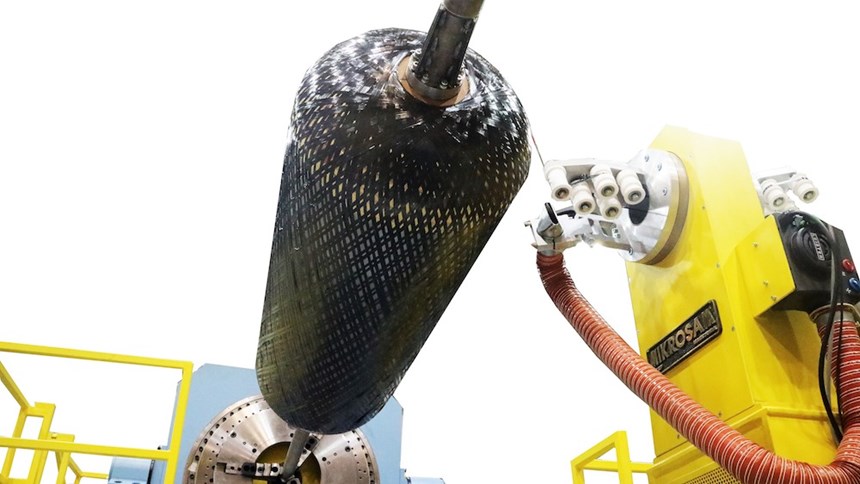Mikrosam launches hybrid AFP & FW solution for composites production
The hybrid work cell integrates the advantages of filament winding (FW) and automated fiber placement (AFP) technologies.
Mikrosam has launched its new hybrid AFP & FW solution for structural composite components production. The hybrid work cell integrates the advantages of both, filament winding (FW) and automated fiber placement (AFP) technologies, to provide new opportunities for increased freedom in designing parts and reaching new levels of productivity and profitability in the aerospace, automotive, oil and gas storage and transport, marine and other industries with high demand of composite parts.
The configuration of the new AFP & FW work cell is a result of Mikrosam’s new R&D Center and offers customers flexibility through a dual process equipment: interchangeable multi-tow (16) AFP head, and a FW system to access the best of both process variants. The advanced AFP head, equipped with infrared heating device, is designed for automated bi–directional lay-up of thermoset prepreg tapes. The filament winder performs wet and dry winding of carbon, glass or aramid fibers. The time consuming process of transferring the product from one machine (FW process) to another (AFP process), which can take more than a day, is significantly reduced. On this new machine, switching from one process (FW) to another process (AFP) is done within minutes. For validation and optimization of the multi-material process, Mikrosam has developed an integrated MIKROPLACE & WINDING EXPERT software module, an exclusive software package for programming and simulating of the cell.
“We have developed many innovative solutions for the composites market, but this one is definitely the most sophisticated, easy-to-use and cost-effective integrated machine in recent years. It is optimized for production of large composite parts, with excellent strength to weight ratio (up to 100 tons weight), diameter of up to 3.5 meters, and lengths of 10 meters. Helicopter propellers, rocket boosters, hydrogen storage tanks, cryogenic tanks, pipes and many other medium to large, complex final composite parts can be produced faster than before. The return on investment is expected to be within two - three years. The possibility of applying multiple material forms on the same part, is expected to increase customer’s productivity by 20% and save time for many new projects” – stated Dimitar Bogdanoski, sales manager at Mikrosam AD.
First presented at CW’s Carbon Fiber Conference, this solution will also be presented at CAMX. Mikrosam’s engineers and representatives, at booth B27, will demonstrate and discuss its many advantages to customers looking for new high-performance solutions in manufacturing composite parts
Related Content
-
Drag-based wind turbine design for higher energy capture
Claiming significantly higher power generation capacity than traditional blades, Xenecore aims to scale up its current monocoque, fan-shaped wind blades, made via compression molded carbon fiber/epoxy with I-beam ribs and microsphere structural foam.
-
Novel composite technology replaces welded joints in tubular structures
The Tree Composites TC-joint replaces traditional welding in jacket foundations for offshore wind turbine generator applications, advancing the world’s quest for fast, sustainable energy deployment.
-
Infinite Composites: Type V tanks for space, hydrogen, automotive and more
After a decade of proving its linerless, weight-saving composite tanks with NASA and more than 30 aerospace companies, this CryoSphere pioneer is scaling for growth in commercial space and sustainable transportation on Earth.














